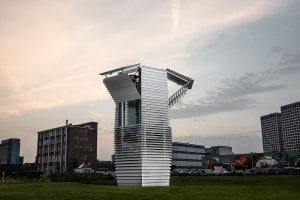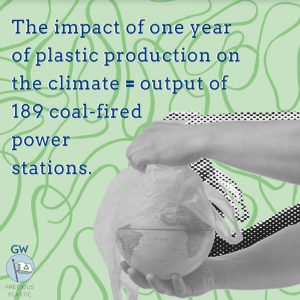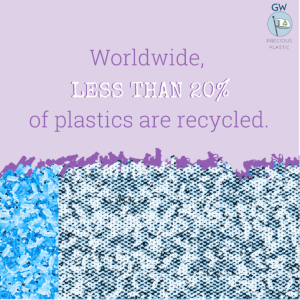In my last post, I discussed the Dearman Engine, which posed a viable solution to the NOx emission problem. However, NOx gases are only a small part of a bigger issue: smog. Smog is produced through the burning of fossil fuels and their derivatives, and it contains a large assortment of particulates and greenhouse gasses.
Because smog is such an issue, I would like to discuss a proposed solution: the Smog Free Tower.
The tower is the work product of Dutch visionary Daan Roosegaarde and his team at Studio Roosegaarde as well as the company ENS Clean Air. Studio Roosegaarde, started in 2007, aims to find innovative ways to solve today’s environmental issues. The tower is but one of their many projects.
The Smog Free Tower
At 7 meters tall, the Smog Free Tower is designed to clean air saturated with smog. The tower does this through a process called positive ionization, which I will discuss later. Using this technique, the tower filters around 30,000 cubic meters of air every hour.
More important than capacity, however, is effectiveness. In a 2017 study completed by the Eindhoven University of Technology, the tower was said to eliminate 70% of PM10 and 50% of PM2.5 from the processed air. PM10 and PM2.5 refer to the diameter of particulate matter in microns.
Before this study, the tower went on a tour of China in 2016 to test its operation in high-smog environments. Throughout the tour, the tower functioned extremely well in a variety of locations. The success of this tour, combined with the promising results of the Eindhoven study, go far in arguing for the validity of this technology.
Still, we must ask ourselves: how does it work?
Positive Ionization
The tower processes smog in the air through principles of positive ionization. Air ionization, a well-documented practice, can be used in many applications, including the reduction of static electricity and separation of particulates from the air. Although the company’s positive ionization process is not specifically discussed, I decided to apply the principles of air ionization to attempt an explanation.
When an AC current is applied to the air, positive and negative ions are created. With a DC current, however, it is possible to create only positive or only negative ions. The process of positive ionization likely refers to the former of these two options.
The positively ionized air (primarily oxygen, nitrogen, and argon) attracts the polar compounds in smog – CO, NOx, and others. These compounds gather around the ion, clumping together and weighing it down. This not only creates larger particulates, it also helps to separate them from the air.
While the description of this process is speculative, derived from the descriptions of air ionization technology, its results are supported by ENS’s description of the system. They claim the “positive ionization technology [is used] to capture fine dust and transform it into coarse dust.” As explained in my theorized description of the process, the particles will gather and grow in size — growing from fine dust to coarse dust.
Although my description is not based on any actual information released from the company, it may portray at least a semi-accurate account of the technology.
Other Smog-Related Projects
In addition to their Smog Free Tower, Roosegaarde has two more initiatives for their Smog Free campaign. Both are designed to increase awareness of their brand and encourage the reduction of smog.
The first, a Smog Free Ring, is derived from the Smog Free Tower. The ring’s ‘stone’ takes the form of a small cube of smog encased within a larger, clear cube. The smog represents 1,000 cubic meters of filtered air, and is currently a permanent exhibit in 3 museums. Purchased by many couples, the ring costs $294.
The second venture, the Smog Free Bicycle, uses a mountable filter to clean air for the rider. The filter takes in air from the front end, filters it, and exhausts the clean air around the rider. The studio hopes to have bike share companies use this technology as a standard within cities.
Just as for the environment, there is also much benefit for the rider. He or she will now have fresh air blown into his or her face, making a smog-filled day more than rideable!
Cleaner Air, Better Future
The smog free tower, along with its counterparts, is a fantastic step in the right direction. The different designs are portable, easy to incorporate, and perform their function admirably. With more Smog Free campaigns and technologies to match, our atmosphere may just survive the future.









